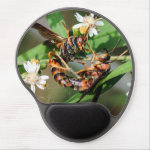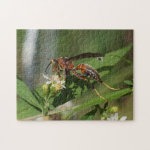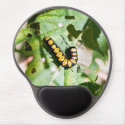Woolly Bear Caterpillar Winter Forecast
As winter and the cold weather are rapidly approaching that means that “caterpillar season” is quickly coming to an end. I wait all year long to hunt these little creatures and the season goes by so fast. Right now the only caterpillars that I am finding are pretty much the Isabella tiger moth (Pyrrharctia Isabella) and the occasional Hickory Tussock Moth caterpillar. The Isabella tiger moth caterpillar is commonly referred to as the woolly bear, banded woolly bear or the woolly worm.
According to folklore, the woolly bear caterpillar can predict the severity of the coming winter. The more black bands that the critter has the harsher the winter conditions will be. So, unless you love cold snowy long winters when you see an Isabella tiger moth caterpillar you want the brown band to take up the biggest part of its body.
The typical woolly bear caterpillar has 13 segments. It is believed that each one of these segments represents a week of winter. The brown segments represent a mild week and the black segments represent a bad week. You can also look to the thickness of the hair on the caterpillar. If it is dense the winter will be colder, but if it is space the winter will be mild. Another prediction depends on which end of the woolly worm caterpillar has the most black stripes. If the head area has more, then the beginning of winter will be the harshest. If the rear area has more, the end end of winter will be the worst.
Woolly bears are so popular here in Ohio that the residents of Vermillion have been holding an annual “Wooly Bear Festival” since 1973. This festival only lasts one day, but it includes a winter forecast, parade and even woolly bear races.
How accurate are the woolly bears weather predictions? Not very accurate at all. Scientists have performed studies and have found out that the caterpillars’ bands are affected by other factors such as the species, food source, natural conditions and age.
So, if you want to believe in the folklore or not is up to you. It doesn’t hurt to check out the caterpillars and see what they might be telling you. Maybe they will be right. This year the caterpillars that I have found all have a large brown section so, here’s hoping to a mild winter.
The caterpillar pictured only has 13 segments, 7 are brown and 6 are black. There are 5 dark stripes on the front of the caterpillar and only 2 on the rear. So, according to folklore the beginning of this winter should be harsh and the end of it not so bad.




























